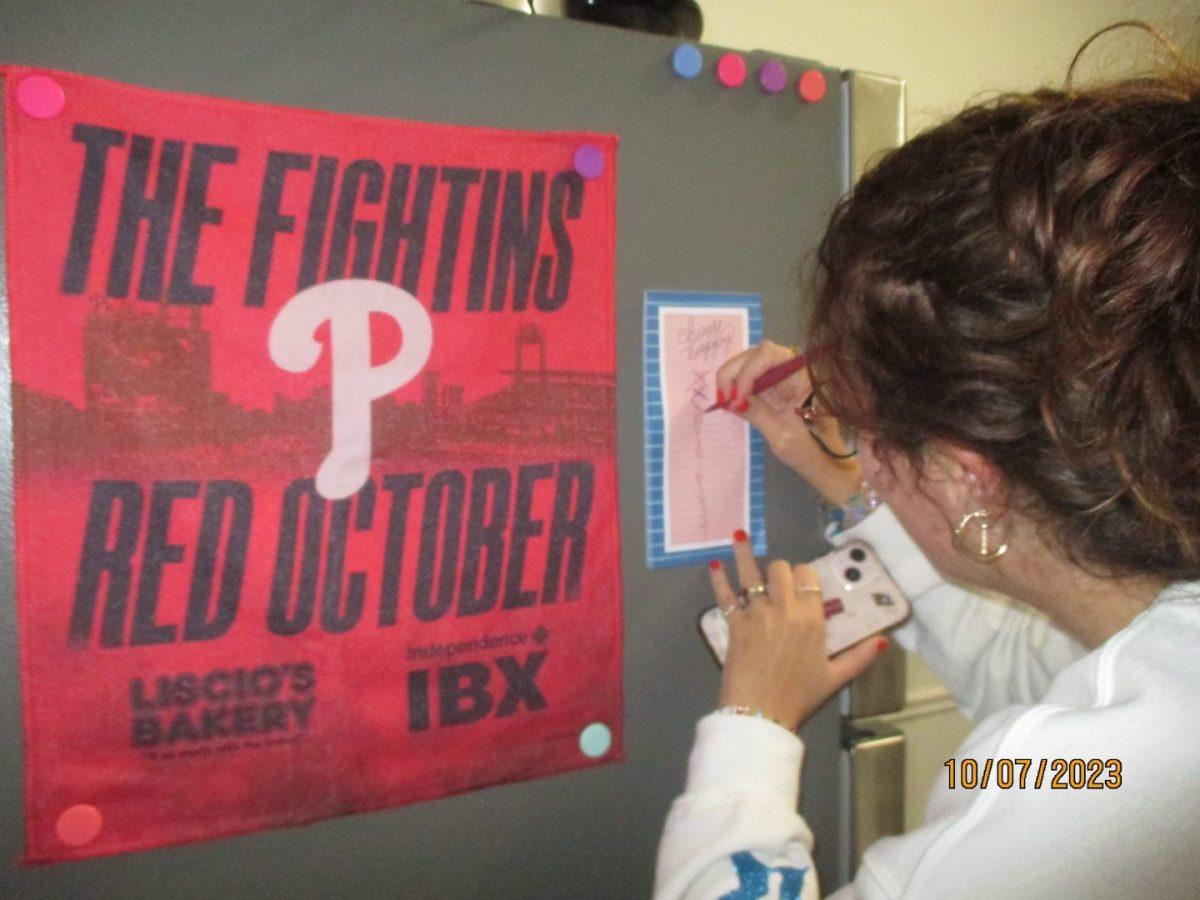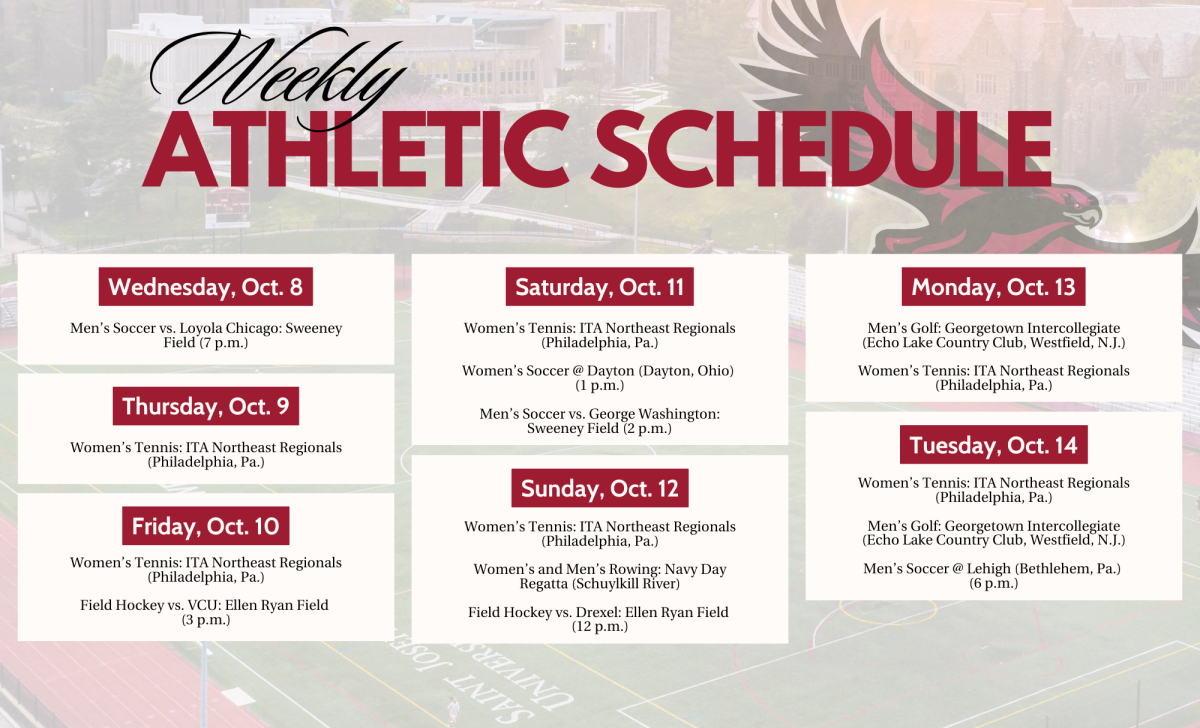When Director of Athletics Jill Bodensteiner, J.D., accepted her job on Hawk Hill back in 2018, she became a member of an exclusive group: female Division I athletic directors. While Bodensteiner said the number of female Division I athletic directors has increased over the years, the sports industry still has a long way to go to achieve gender equality.
The Hawk spoke to Bodensteiner about the importance of women in sports, working in a male dominated industry and what St. Joe’s can do to better support female athletics and female athletes.
What does it mean to be a female athletic director in an industry that is so male dominated?
Up to about 12-13% of Division I athletic directors are women, which [shows] great strides. But considering that more than 50% of the student athletes are women, we have a long way to go. For me, day to day I don’t say too much about it. I don’t feel like I have to prove myself in any different way other than being successful on behalf of St. Joe’s. I would say two things. One, it’s really important to be a role model and mentor to other young women as well as individuals of color because we have to have more representation of those two groups in college athletics. And then the second thing, I think transparency is important, I do receive my share of sexist comments both in person and online particularly so that still exists. We just have to be above it and move on.
How do you empower women to follow a similar path to yours and why is it important to do so?
In college athletics we’re a profession that caters to men and women. Title IX is a huge part of what we do [with] gender equality. Yet we’ve got massive discrimination in college athletics in the coaching and administrative ranks. It’s really important that our female student athletes, our Black student athletes, see more role models who look like that, and who’ve been through some of the things that they’re going to go through.
Even looking at coaching, there are really no women in Division I men’s basketball coaching, but there are 50% men coaching in women’s basketball. So what does that say to women? That you’ve got no chance at coaching the men and a half chance at coaching women, it’s not a good situation.
What I can do about it, I think both privately and on a micro level, is to mentor as many young women as I can and then on a bigger level just speak and use my voice. I was on the FCI Global Women’s Network, I did a TED Talk on confidence, particularly as it relates to women. I spoke at an all girls high school graduation recently, just trying to get out there and show young girls and women what they can do and how they can use their intelligence and moxie and all the other great characteristics to lead.
What barriers do women face when entering the coaching and administrative side of sports?
The first is hiring, all sorts of research shows that people hire other people who look like them and they can relate to. So most college presidents are white males and most athletic directors are white males, so we need to diversify the ranks of the people making the hiring, otherwise we’re going to see a continuation of hiring white men for those positions.
There’s this stereotype that women can’t be athletic directors if the team has football because women have never played football. But then you look around the ranks and very few men who are athletic directors overseeing football played football, so there’s a double standard and a stereotype. I think lifestyle, athletics is a 24/7 business [and] people ask me about “Are summers off or do you get to relax on weekends?” No, you’re at games and you’re watching games constantly and for coaches they’re recruiting around the clock. I think sort of the way our society is set up, it’s rare to find men who want to stay home and raise the kids or participate fully. A lot of women, when they get to this stage, if they do want to have kids, find that athletics are very difficult to try and be a full-time primary caregiver and also 24/7 coach or athletics administrator.
The media does a great job of lambasting everything that college athletics does but the sexism in the media really stands out to me. For example, a very prominent national college athletics writer listed the six prominent candidates for [the University of Kansas Athletic Director] job and all six were white men. That’s how the word gets out there. Why would you think of a woman or why would you think of a man or a woman of color for that position when the media has this narrative that it should be white men? Media people saying I must know nothing about basketball because I’m a woman, [or] the number of people who have said to me when I got the job at St. Joe’s, “So you’re going to oversee the women’s sports, will Don [DiJulia] continue with the men?” That level of sexism in our society is outrageous, but it really starts with the media. When that kind of sexism exists in our society, it just makes it harder for women to get into these roles.
How can the St. Joe’s community advocate for both women’s athletics and female athletes?
From an athletics perspective, more exposure. We can do a better job [through] social media, media and trying to get students out watching our phenomenal student athletes compete. Building on that, talking about it more, maybe a panel on the U.S. Women’s National [Soccer] Team and the journey they’ve been through over equal pay.
I remember doing a panel on sexism in the media and sports media when I was at Notre Dame that was very well attended and I learned a ton. Then celebrating our own. You look at Natasha Cloud leading her WNBA team to a championship, maybe a game watch to watch Natasha and her teammates and let’s get together to watch one of our most famous alums do her thing.
It’s going to be collective and it really starts with athletics and the exposure we give to our female student athletes. Getting more fans out to our women’s games would be a great start.
















































